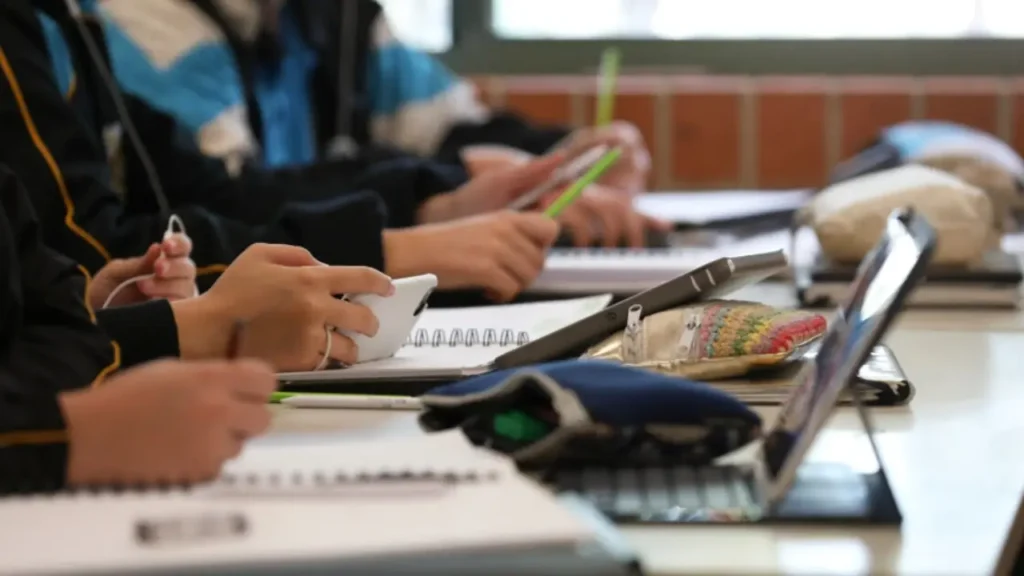Technology has transformed teenage education, altering how students access information, connect with peers, and engage with learning resources. The advent of tools like interactive apps and online classrooms has opened up vast opportunities for learning. Yet, this shift brings with it several unforeseen challenges that can impact students’ academic success and mental health.
Concerns such as social media addiction, cyberbullying incidents, and disparities in access to technology present notable obstacles. In this article, we’ll examine how technology is influencing teen education while also highlighting the unseen consequences it may bring.
Enhanced Learning Opportunities
Technology has opened up a world of learning possibilities for teens, transforming traditional educational methods. With the rise of digital platforms, students can engage with interactive content, explore virtual environments, and access resources from around the globe.
Educational apps and online tools allow teens to personalize their learning experience, making it more engaging and tailored to their individual needs.
NCBI states that students using an online interactive education program (OIEP) showed increased engagement, satisfaction, and preparedness for the NCLEX compared to traditional textbooks. Significant improvements were observed in content comprehension, and both students and faculty supported OIEP’s efficacy. This suggests that OIEP could reduce burnout and enhance learning outcomes over time.
Improved Communication and Collaboration
Technology has transformed how students communicate and collaborate in educational settings. Using tools like video conferencing, online forums, and collaborative software, students can easily share ideas and work on group projects.
These platforms foster teamwork and bridge geographical gaps, allowing students to collaborate globally. Teachers also benefit by staying connected with students outside the classroom, offering continuous guidance and support.
The Florida Center for Instructional Technology states that students advance through five levels of collaborative learning. They start by working alone at the entry-level and progress to engaging in global collaboration at the transformation level. This progression enriches students’ learning experiences, broadens their perspectives, and fosters critical thinking, making technology an essential part of modern education.

Accessibility and Inclusion
Assistive technologies like screen readers, voice-to-text software, and adaptive devices make learning more inclusive for students with disabilities. Students from underserved communities can also access educational materials and online courses, bridging gaps in resources and opportunities.
However, despite these advancements, the digital divide remains a significant obstacle. Students who lack reliable internet access or devices are disadvantaged, highlighting the need for equitable access to technology.
Social Media Addiction
Social media addiction has become a growing concern, particularly among teens, as it increasingly influences all aspects of their lives. Dependence on platforms like Instagram, TikTok, and Snapchat has harmful effects on both education and well-being. Teens often become distracted by these platforms, spending hours scrolling through feeds or interacting with friends instead of focusing on their studies.
Moreover, the pressure to maintain an active online presence can increase anxiety and lower self-esteem, further affecting students’ mental health. These issues have given rise to social media addiction lawsuits, claiming that platforms encourage addiction and its associated harms. These lawsuits argue that social media companies prioritize engagement over users’ well-being, knowingly creating environments that foster addiction among vulnerable teens.
According to TruLaw, social media addiction has been linked to self-harm and suicide, raising serious concerns. Cyberbullying, excessive screen time, exposure to idealized images, and peer pressure all contribute to emotional distress and risky behaviours.
The Digital Divide
Despite the advancements in educational technology, the digital divide continues to create disparities among students. Those from lower-income families or rural areas often struggle to access the internet or digital devices necessary for online learning. This gap puts them at a disadvantage compared to their peers, who have consistent access to technological resources.
Schools can address this issue by implementing programs that provide devices and offering community-based solutions like public Wi-Fi hotspots. Overcoming the digital divide requires more than hardware; it also requires ongoing support and training for students and educators.
Cyberbullying and Online Safety
According to the Pew Research Center, nearly half of US teens have been bullied online, with physical appearance a frequent reason. A survey found that 46% of teens reported cyberbullying, including offensive name-calling (32%) and spreading false rumours (22%). Older teen girls are particularly affected, with 54% reporting multiple forms of abuse, highlighting the urgent need for proactive online safety measures.
As teens increasingly rely on technology for their education, the risk of cyberbullying and online safety concerns grows. Unlike traditional bullying, cyberbullying can occur 24/7, often hidden from teachers and parents.
Harmful messages, rumours, and harassment spread quickly on social media, affecting teens’ mental health, self-esteem, and academic performance. Schools must prioritize online safety by educating students on digital etiquette and the consequences of cyberbullying. Implementing clear anti-bullying policies and providing a safe space for students to report incidents are vital steps.

The Role of Parents and Educators
ScienceDirect highlights a study that explored parental monitoring of middle schoolers’ technology use and its impact on problematic internet use (PIU). Findings revealed that restrictive monitoring increased PIU, while active monitoring and family closeness reduced it. This underscores the importance of balanced oversight.
Parents and educators play critical roles in this effort, setting boundaries and integrating technology thoughtfully. Parents can help by monitoring their teen’s online activities, setting screen time limits, and encouraging offline hobbies that promote balance.
Educators, on the other hand, must integrate technology into their lessons thoughtfully, ensuring it enhances rather than distracts from learning. By working together, they can create a digital environment where teens benefit from technology without falling into harmful patterns.
Frequently Asked Questions
Q1. How can parents help manage their teen’s technology use for better educational outcomes?
Ans: Parents can manage their teen’s technology use by setting screen time limits, encouraging breaks, and monitoring content. Encouraging offline activities, open communication, and balanced technology use helps teens stay focused and engaged in their education.
Q2. What are the risks of cyberbullying in relation to technology use in schools?
Ans: Cyberbullying poses significant risks in schools, primarily due to the 24/7 access teens have to technology. It can lead to anxiety, depression, and decreased academic performance, with victims struggling to concentrate. Cyberbullies may face disciplinary actions from schools or even legal consequences.
Q3. What can schools do to bridge the digital divide among students?
Ans: Schools can help bridge the digital divide by providing devices and internet access and ensuring affordable digital tools for all students. Schools can collaborate with communities and governments to promote equal access to technology, helping students succeed in digital learning.
Bridging Gaps Through Technology Access
Technology has had a profound impact on teen education, offering both enhanced learning opportunities and presenting new challenges. From improving accessibility to promoting collaboration, the benefits are clear. However, issues like the digital divide, social media addiction, and cyberbullying require careful attention from parents, educators, and policymakers.




